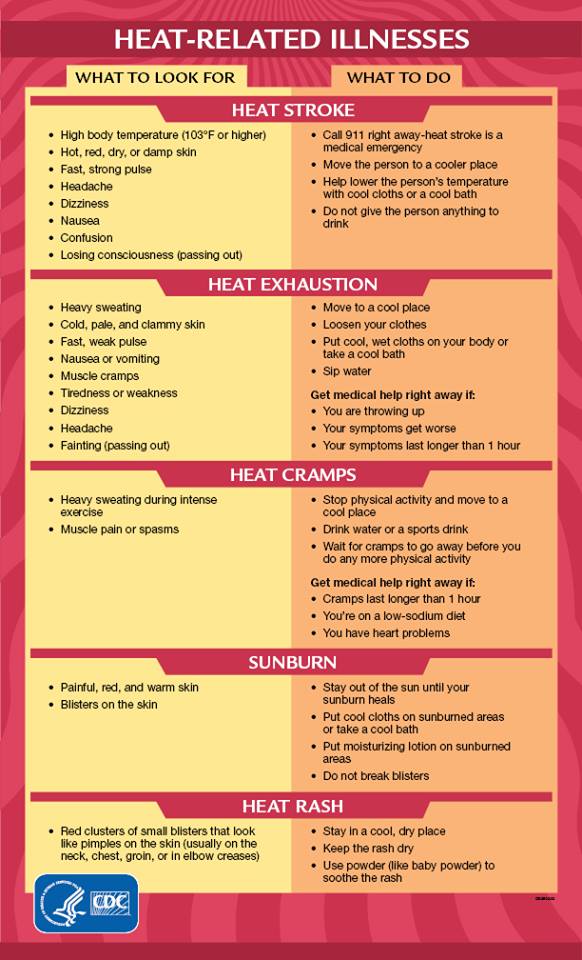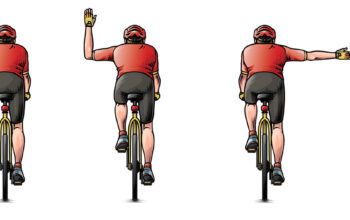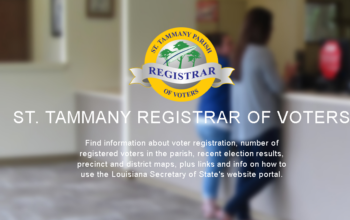Heat Stroke: high body temperature; hot, red, dry or damp skin; fast, strong pulse; headache; dizziness; nausea; confusion; losing consciousness
What To Do: call 911 immediately – heat stroke is a medical emergency move the person to a cooler place; help lower the person’s temperature with cool cloths or a cool bath; do not give the person anything to drink
Heat Exhaustion: heavy sweating; cold, pale and clammy skin; fast, weak pulse; nausea or vomiting; muscle cramps; tiredness or weakness; dizziness, headache, fainting
What To Do: move to a cool place; loosen clothing; put cool, wet cloths on body or take a cool bath; sip water
Get Medical Attention If: vomiting, symptoms worsen or last longer than one hour
Heat Cramps: heavy sweating during intense exercise; muscle pain or spasms
What To Do: stop physical activity and move to a cool place; drink water or a sports drink (electrolytes)
Get Medical Attention If: cramps last longer than one hour; low-sodium diet; heart problems
Sunburn: painful, red and warm skin; blisters
What To Do: stay out of the sun until sunburn heals; put cool clothes on sunburned areas or take a cool bath; use moisturizing lotion on sunburned areas; do not break blisters
Heat Rash: red clusters of small blisters that look like pimples on the skin (usually on the neck, chest, groin or in elbow creases)
What To Do: stay in a cool, dry place; keep the rash; use powder (like baby powder to soothe the rash)
Make sure to stay hydrated by drinking plenty of water. Loose, light clothing and hats will help shade direct sun.





